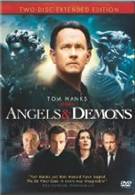It's easy to look at the work of novelist Dan Brown and think that virtually anyone could be just as successful by using Wikipedia and the cut-and-paste function on their computer. Look up some arcane trivia about the Catholic Church, make a few references to the Illuminati or the Knights Templar, and mix it all up in some kind of treasure-hunt mystery based on clues found in ancient documents. That gets you more than halfway there. Establish some symbologist or semiotician as the hero, add a smart European heroine who is basically the modern-day version of the "kidnapped scientist's daughter," and in just a few weeks you could create something like "The Michelangelo Connection." These external trappings obscure Brown's real skill as a writer, which lies in plot construction. It might be easy to concoct the framework of an exciting thriller, but it's quite another thing to keep the reader in suspense for 500-odd pages. While Brown's novels have cerebral subjects, they remain old-fashioned pulp adventures at heart, featuring the hero surviving cliffhangers while trying to save the world from literal or figurative ticking bombs. Brown is very good at keeping the action moving in a very linear, scene-by-scene manner. Which is exactly why they are perfect source material for movies.
How director Ron Howard failed to make an entertaining movie out of Brown's fourth novel, The Da Vinci Code, remains a mystery more puzzling than the story itself. As a filmmaker, Howard is an anonymous but dependable craftsman. Da Vinci, however, was inept. Paced like a Sunday visit to the Louvre, the film was talky in the extreme, dramatically neutral, and featured a hero who was more of a bystander than an active participant. Tom Hanks' weird experimental hairstyle didn't exactly help matters either. In terms of cinematic craft, Howard's flat and ludicrously self-important film was like a handbook on how not to craft a suspense thriller.
Which is why I was pleasantly surprised by Angels & Demons. It appears that Howard knew that he had to change the way everything was done in the previous film, and sending Tom Hanks to the barber was a very good start. I am happy to report that his hair is not a distraction this time and that the failed coiffure has been guillotined. All kidding aside, the hair is symbolic of the no-nonsense manner that this film demonstrates from the beginning. It's clear that Howard intended to make a good, craftsmanlike thriller, and while no classic of the genre, this time the film actually works as advertised.
Angels & Demons takes place following the death of the Pope, during which the Catholic version of American Idol begins. Robert Langdon (Hanks), Brown's everyman Indiana Jones, returns to match wits with the Vatican, who have reluctantly requested his help in a very dire situation. It seems that someone claiming to be part of the notorious and once persecuted "Illuminati" has kidnapped the "Preferiti"-- the four Cardinals considered to be next in line for the Papacy -- and intends to kill one every hour from 8pm to midnight, at which point he will do something much worse. In other news, the research facility known as CERN has had a security breach involving the theft of some "anti-matter," which is kind of like the Big Bang in a bottle. The kidnapper declares that the antimatter device will be triggered over St. Peter's Square, where thousands of Catholics have collected in anticipation of the announcement of a new Pope. Langdon races the clock, along with Italian “bioentanglement physics” scientist Vittoria Vetra (Ayelet Zurer), to stop this Neo-Illuminati from causing death and destruction for a centuries-old slight. Of course, none of this is really what it seems to be.
Now, this might not have the whole "You are the descendent of Jesus Christ" hook of The Da Vinci Code, but it's a flat-out better story. There are real stakes involved, an actual ticking bomb to create suspense, and none of the really outlandish elements of the first film. Most of what transpires is believable within the context of the story. There are no self-flagellating albino monks this time, and Robert Langdon is very much in the thick of things from beginning to end (and no longer claustrophobic, apparently). The fact that the filmmakers filmed the Langdon books out of order pays off dramatic dividends here by increasing the conflict between the professor and the Church following the "shocking" revelations of Da Vinci. It turns out that the Vatican views Langdon as "formidable."
As in the first film, the cast is first class. Ayelet Zurer from Steven Spielberg's Munich is a much better match for Hanks onscreen than the childlike Audrey Tautou, but thankfully there was no attempt made to develop any kind of distracting romance in the middle of a countdown thriller. Among the rogue's gallery of red herrings, Ewan McGregor in particular creates a very interesting character as the soft-spoken Camerlengo. There is one significant change from page to screen, but it illustrates a keen understanding of cinematic verisimilitude and of Robert Langdon as a screen character. Having Langdon suddenly jump out of moving helicopters may have worked in the novel, but onscreen it would be a bit much. As it is, the climax is both exciting and absurd. Contrary to what Larry King is quoted as saying on the DVD, the ending will not "blow your mind." There is a twist, of course, but it's certainly not unexpected. Your mind will remain intact. Angels & Demons (Two-Disc Extended Edition) presents a longer version of the movie in an anamorphic widescreen unrated cut. The theatrical version was PG-13, and with the newer footage added I would say this would be an R at most. The original theatrical cut is only included in the Blu-Ray version. While there is no audio commentary, there are seven featurettes on two discs that are actually more detailed than the normal studio-produced behind-the-scenes material. That said, "Characters in Search of a True Story", "Angels & Demons: The Full Story," and "Writing Angels & Demons" are pretty standard stuff featuring softball interviews with the cast and creators. It's the smaller pieces that are much more interesting.
Angels & Demons is a challenging film both in terms of content and craft. Part of the film's effectiveness comes from presenting an inside view of the workings of the Vatican, from the Cardinals' voting process to the fact that the archives are sealed in glass rooms with controlled levels of oxygen. The film required that the locations be as authentic as possible, and the filmmakers were faced with the great challenge of not being able to shoot at the actual locations since the Vatican would not allow it. The results are never less than absolutely believable.
"Rome Was Not Built in a Day" shows the tremendous engineering and artistic pains that the visual effects and production designers had to go through in order to create a believable St. Peter's Square in a parking lot and the Sistine Chapel on a soundstage. "Handling Props" focuses on the complex and perhaps overly detailed prop-creation process. Some of the books are only seen for mere seconds onscreen but were completely written and illustrated with hundreds of pages of text and drawings. Still, very impressive work. "This is an Ambigram" is a profile of John Langdon, the author of Wordplay, a groundbreaking book of word puzzles and graphics. The man's last name is not coincidentally the same as the hero of Brown's books. "Cern: Pushing the Frontiers of Knowledge" is like a mini Discovery Channel piece that deals with the particle collider and the "anti-matter" science from the movie. Apparently, CERN is open for visitors if you are interested in seeing a particle collider firsthand. I'm not sure if you need security clearance, but I would check before just walking in.
I Did Not Expect Kelsea Ballerini To Replace Blake Shelton As Adam Levine’s Rival On The Voice, But The Maroon 5 Singer Knew It ‘Instantly’
NCIS: Origins Dropped Some Major Bombshells For Its Sandman Story, And Now The Season 1 Villain Is A Lot More Frightening
90 Day Diaries Dropped Some Massive Kobe And Emily Updates, And I'm So Happy For Them











